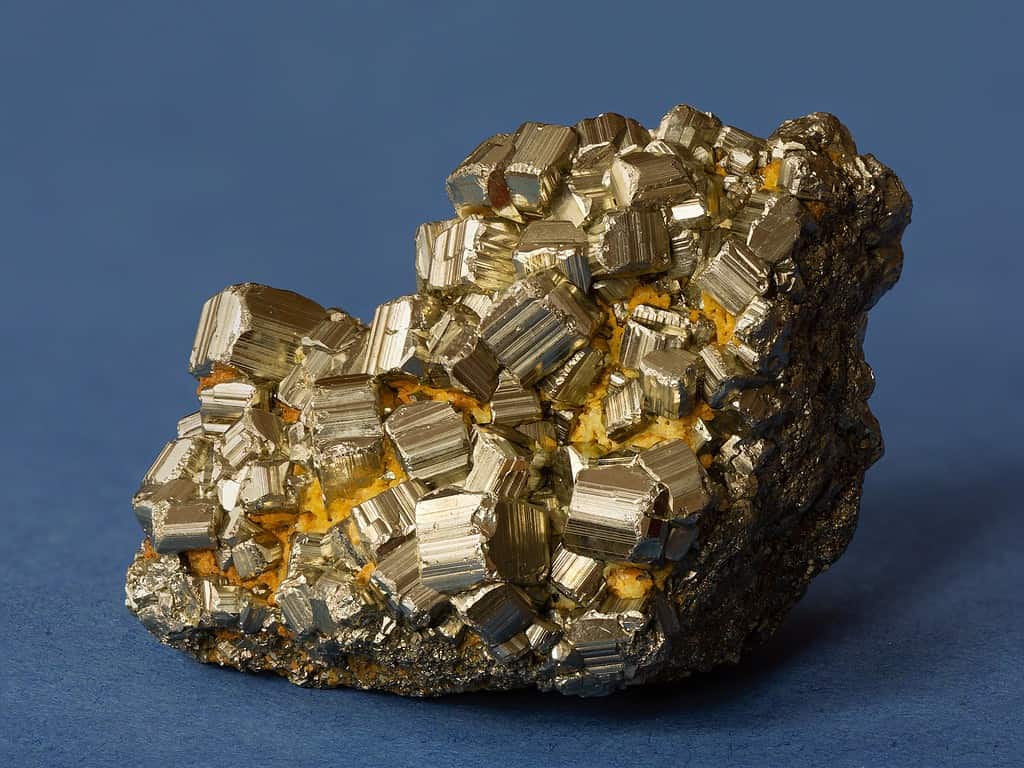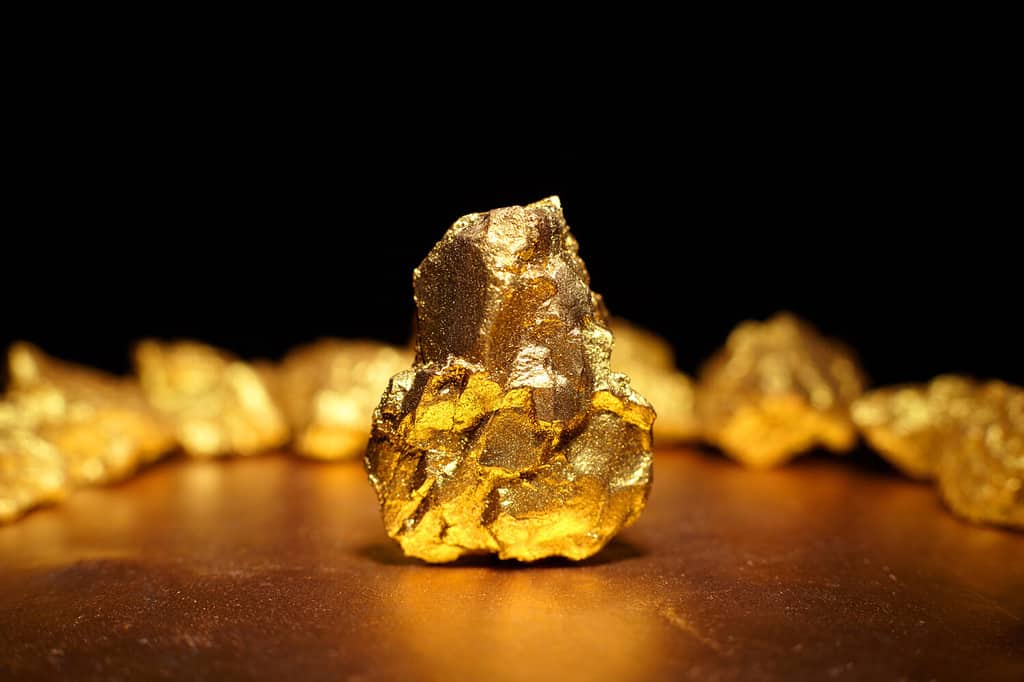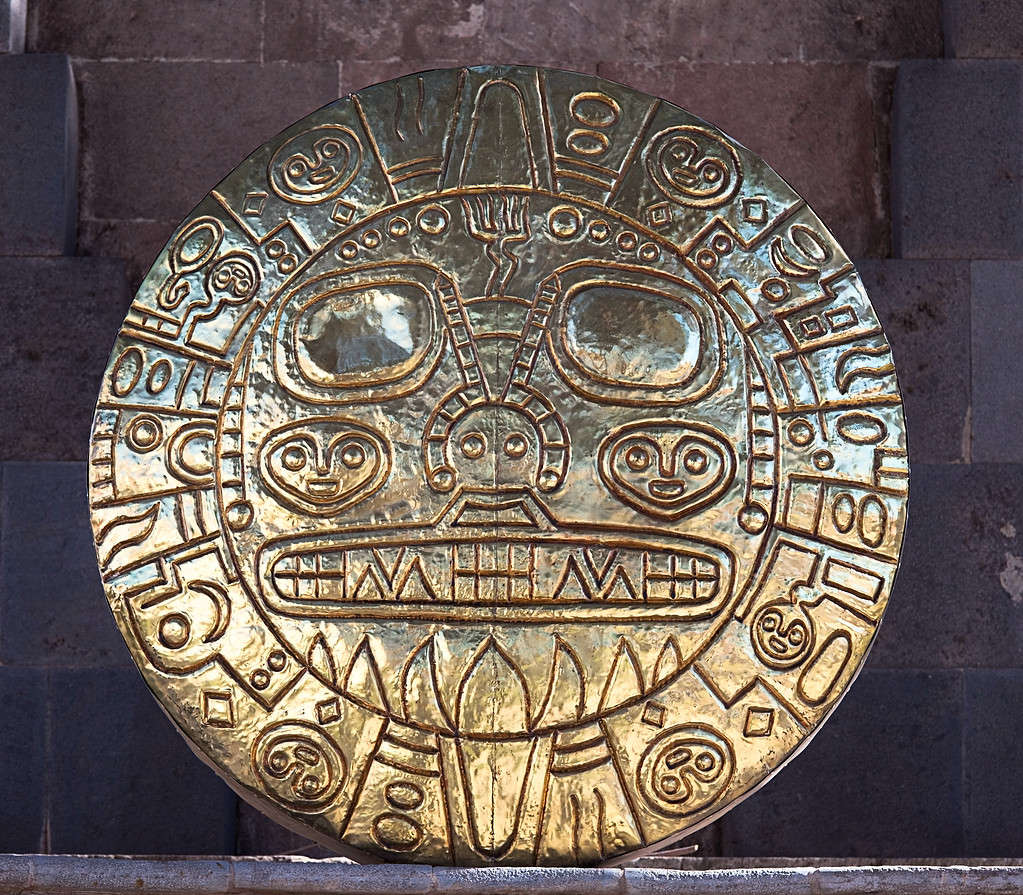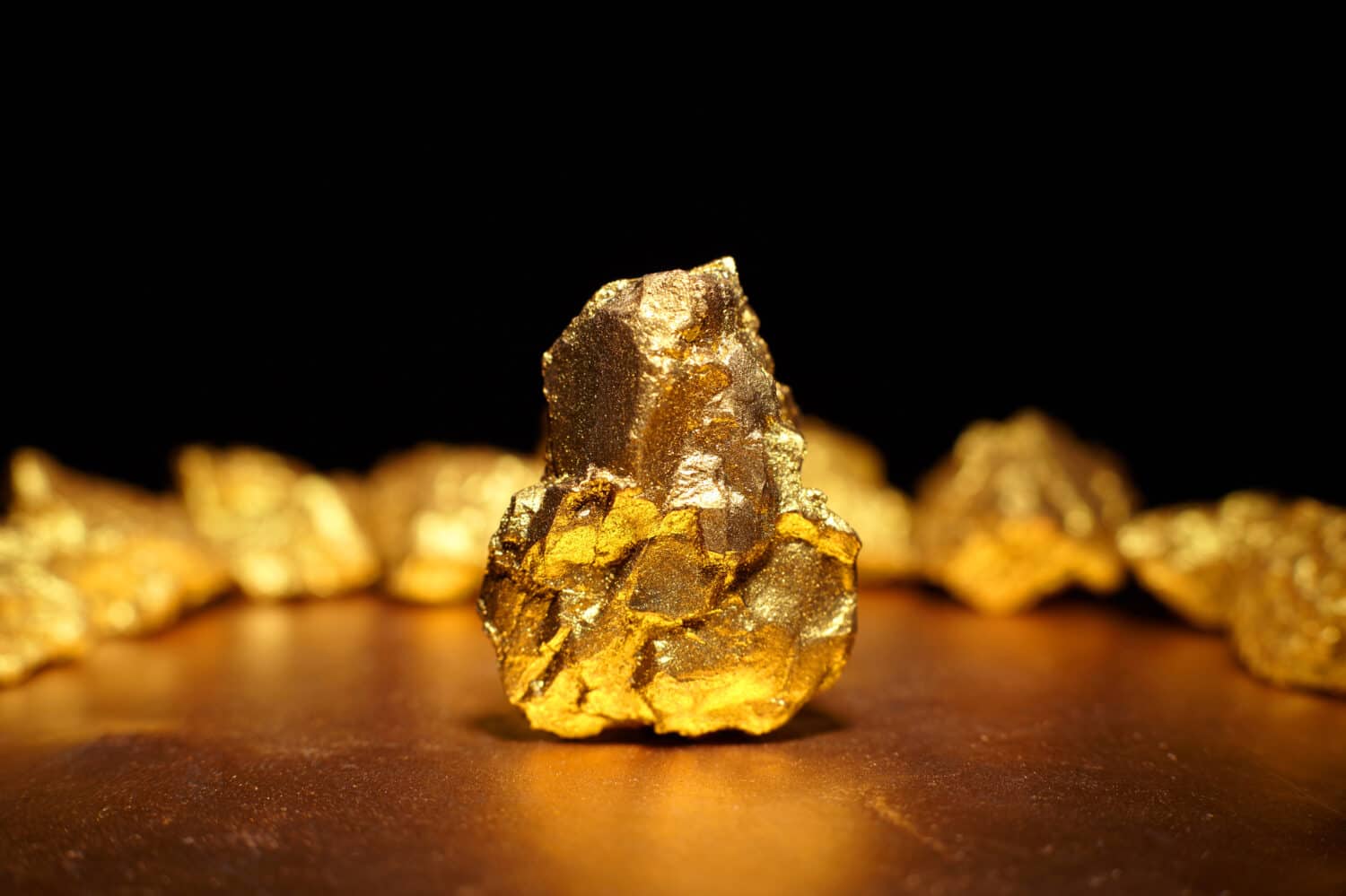Precious metals have captivated humanity for centuries, and distinguishing between genuine gold and its deceptive counterpart, fool’s gold, has been an age-old challenge. While both may glitter and gleam, they hold vastly different values. Discover how to identify gold from fool’s gold. Whether you are a seasoned prospector, a curious enthusiast, or simply wish to safeguard your investments, unravel the mysteries behind the identification process.
What Is Fool’s Gold?
Fool’s gold, also known as iron pyrite or simply pyrite, is a mineral that has long captivated prospectors and treasure hunters with its deceptive appearance. Its name, “fool’s gold,” speaks to its ability to masquerade as genuine gold, leading many astray in the pursuit of fortune.
Fool’s gold exhibits several key features that contribute to its resemblance to true gold:
- Appearance: Fool’s gold typically boasts a brassy or yellowish hue that is easily mistaken for gold’s sheen. Its metallic luster adds to the illusion of preciousness. Additionally, it often forms in cubic crystals, further complicating identification.
- Composition: Chemically, it comprises iron disulfide (FeS2), with iron and sulfur as its primary components. This composition differs significantly from gold, which is a noble metal.
- Formation: Fool’s gold commonly forms in sedimentary rocks, often alongside other minerals and ores.

Pyrite has a distinct cubic crystal structure.
©Uoaei1, CC BY-SA 4.0 , via Wikimedia Commons – Original / License
How to Identify Gold From Fool’s Gold
When distinguishing genuine gold from its deceptive counterpart, fool’s gold, there are several methods you can employ to ensure that your precious discovery is indeed true gold.
Visual Inspection
Visual inspection is often the first and simplest method for identifying gold from fool’s gold, requiring nothing more than keen observation. It involves examining the mineral’s appearance, color, luster, and crystal structure.
Color Comparison
The most apparent distinction between genuine gold and fool’s gold lies in their color. Gold exhibits a distinct and captivating golden-yellow hue. In contrast, fool’s gold appears more brassy or yellowish. When inspecting, study the mineral’s color as your initial clue.
Gold is renowned for its rich, deep golden-yellow color, which is one of its most defining characteristics. This color is often described as warm and radiant, with a soft, inviting glow. Additionally, real gold maintains a consistent golden color throughout the entire mineral sample, whether it’s in the form of nuggets, flakes, or dust. It also retains its distinctive hue under various lighting conditions.
Fool’s gold, on the other hand, tends to have a brassy or yellowish hue that, while resembling gold, often lacks the richness and depth of genuine gold’s color. Pyrite’s color can vary within a single sample, sometimes displaying darker or lighter areas. This variability is due to the presence of impurities and different crystal orientations.
Luster Examination
Another valuable visual cue is the way light interacts with the mineral’s surface. Gold possesses a rich, metallic luster that reflects light uniquely, contributing to its allure. However, fool’s gold appears shinier and more sparkly. Pay close attention to how the mineral glistens or shines, as this can provide a valuable hint in your identification process.
When light strikes the surface of true gold, it reflects in a way that creates a captivating, soft, and warm metallic glow. This luster is often described as “buttery” or “satiny.” Furthermore, gold’s metallic luster imparts a smooth and gentle reflection of light. It doesn’t produce sharp, sparkling reflections but rather a consistent and inviting shine.
Fool’s gold also exhibits a metallic luster, but it differs from real gold. Pyrite’s luster can be described as more “sparkly” or “brassy” compared to the soft and smooth reflection of gold. When light hits pyrite’s surface, it creates sharp and often high-contrast reflections, resulting in a more glittery appearance. This is a key visual distinction between the two minerals.
Crystal Structure
Gold and fool’s gold also differ in their crystal structures. Genuine gold rarely forms distinct crystals and is more commonly found in its native, uncrystallized state. Contrarily, fool’s gold frequently presents itself in cubic or pyritohedral crystals, which can be visually striking. Carefully examine the shape and structure of the mineral, as this variation can be a clear indicator of whether you are dealing with gold or pyrite.
Gold, in its natural state, often appears as irregularly shaped nuggets, flakes, or grains. These formations lack the well-defined geometric shapes associated with crystalline minerals. Instead, they exhibit a more random, amorphous structure. The surface of uncrystallized gold may be smoother and less faceted compared to crystals. Visually, uncrystallized gold can have a more “raw” or “nugget-like” appearance with a shiny, metallic luster.
On the other hand, fool’s gold, or pyrite, forms well-defined cubic or pyritohedral crystals. These crystals have distinct geometric shapes with flat, often shiny faces. The crystals resemble small cubes, and the pyritohedral crystals have 12 faces that give them a pentagonal shape.
These crystal faces reflect light differently, contributing to the mineral’s characteristic sparkly appearance. When examining fool’s gold, you may observe these geometric shapes on the surface, and the overall appearance is more structured compared to uncrystallized gold.
Visual inspection serves as an excellent starting point in identifying gold from fool’s gold, providing valuable initial clues that can help you make a more informed assessment of your discovery. However, it is essential to complement visual inspection with additional tests to ensure accurate identification.

Gold’s crystal structure is smoother and more amorphous than pyrite’s structure.
©Roman Bodnarchuk/Shutterstock.com
Hardness and Streak Test
Another valuable set of techniques for identifying gold from fool’s gold involves assessing their hardness and conducting a streak test. These tests provide tangible evidence that goes beyond visual inspection, helping to confirm the true nature of the mineral you have discovered.
Mohs Hardness Scale
The Mohs hardness scale is a fundamental tool in mineral identification. It ranks minerals from 1 (softest) to 10 (hardest) based on their ability to scratch one another. Gold is relatively soft on this scale, with a hardness rating of approximately 2.5 to 3. This means that you can scratch gold easily with just a fingernail or a copper penny. Fool’s gold, however, ranks higher on the Mohs scale, typically around 6 to 6.5, making it significantly harder than gold.
Perform a Hardness Test
To perform a hardness test, you can use common objects like your fingernail or a penny, both of which are softer than gold. Gently attempt to scratch the mineral’s surface. If the mineral is gold, it should leave a noticeable mark on your testing material. However, if it’s fool’s gold, it will resist your efforts to scratch it.
Conduct a Streak Test:
The streak test is another effective method for mineral identification. It involves rubbing the mineral against a piece of unglazed porcelain, which produces a characteristic streak of color. Gold leaves behind a distinct golden-yellow streak, aligning with its color. However, pyrite leaves a greenish-black streak because of the presence of iron sulfides.
Specific Gravity Test
The specific gravity test is another critical technique for distinguishing gold from fool’s gold, offering a quantitative measurement of a mineral’s density. Gold and fool’s gold have notably different specific gravities, making this test a reliable identification method.
What Is Specific Gravity?
Specific gravity is a measure of the density of a substance relative to the density of water. It is a dimensionless value, and in mineral identification, it provides insights into the density of the mineral in question.
Gold has a high specific gravity, typically ranging from 15.5 to 19.3, depending on its purity and alloy composition. This high specific gravity means that gold is exceptionally dense compared to many other minerals.
Test Specific Gravity at Home
Follow a few simple steps to test specific gravity at home:
- Weight in air: First, weigh the mineral sample in grams using a kitchen scale.
- Weight in water: Place a container of water on your scale. Tare, or zero, your scale. After, place the mineral sample into the container of water and record the new weight in grams.
- Calculate the specific gravity:
Specific Gravity = (Weight in Air) / (Weight in Water)
- Interpret your results: Gold’s specific gravity falls between 15.5 and 19.3, so a high specific gravity reading is indicative of genuine gold. Fool’s gold, on the other hand, has a lower specific gravity, often around 4.9 to 5.2.
The specific gravity test is a quantitative and reliable method for identifying gold, especially when used in conjunction with other tests. It provides concrete data that can confirm whether the mineral you’ve found is genuine gold or fool’s gold. However, for the most accurate results, it’s essential to complement the specific gravity test with visual inspection and additional identification methods.
Professional Assessment
While various methods can help you identify gold from fool’s gold at home, nothing beats the expertise of a professional assessment. This approach offers the highest level of confidence in confirming the authenticity of your mineral samples and is often the preferred choice when dealing with valuable specimens.
Professional assays play a pivotal role in mineral identification, especially for precious metals like gold. These assays specialize in mineral analysis. The cost of a professional assay varies depending on the complexity of the analysis and the organization or laboratory you choose.
While professional assessments may come with a price tag, they are highly reliable and provide a conclusive answer. For valuable or high-stakes situations, the investment in a professional assay is often the best choice. Professional assessment represents the gold standard in identifying and confirming the authenticity of your gold samples.
The Value of Real Gold
Gold stands apart for its unparalleled value and enduring allure. Understanding the significance of genuine gold is not just about its financial worth but also about appreciating its historical, cultural, and practical importance.

Gold coins were first used as money in Lydia in the 6th century BC.
©IlonaBudzbon/ via Getty Images
Historical Value
Gold’s value begins with its rarity in nature. It is one of the scarcest elements on Earth, which has historically made it highly sought after and prized. From ancient civilizations to modern societies, gold has been treasured for its scarcity, serving as a symbol of wealth, power, and status. This historical value is deeply embedded in human culture and has driven exploration, conquests, and trade routes across the ages.
Economic Significance
Gold’s value extends to the world of finance and economics. It has been used as a form of currency and a store of value for centuries. Even today, it plays a crucial role in the global financial system.
Central banks hold significant gold reserves, and investors turn to gold as a hedge against inflation and economic uncertainties. Its stability and intrinsic value make it a reliable asset for preserving wealth.
Artwork
Beyond its monetary role, gold has found its place in cultural and decorative arts. Its malleability, beauty, and enduring shine have made it a favorite material for jewelry, ornaments, and intricate artwork. Gold’s use in religious artifacts and ceremonies further emphasizes its spiritual significance in various cultures worldwide.
Practical Applications
Gold is not just a symbol of wealth. It also has practical applications in various industries. Its excellent conductivity makes it valuable in electronics, where it is used in everything from smartphones to spacecraft. It is also employed in dentistry and medical devices due to its biocompatibility and resistance to corrosion.
Environmental Importance
Beyond its human-centered uses, gold has environmental significance. It is inert, non-reactive, and does not tarnish, making it an eco-friendly choice for various applications. For example, its use in space exploration is due to its ability to withstand harsh conditions without deteriorating or contaminating environments.
Common Mistakes to Avoid
Several common misconceptions and pitfalls can lead even seasoned prospectors astray. Recognizing and avoiding these mistakes is crucial to ensure accurate identification and prevent disappointment.
- Don’t rely on color: One of the most prevalent mistakes is relying solely on color for identification. While gold has a distinctive golden-yellow hue, fool’s gold can also exhibit a yellowish or brassy color, creating confusion. Visual inspection should include a thorough assessment of other characteristics beyond color.
- Don’t ignore the crystal structure: Gold’s metallic luster and the absence of well-defined crystal structures are key features to consider. Fool’s gold, in contrast, may have a shinier appearance and form cubic or pyritohedral crystals.
- Don’t neglect the streak test: Gold typically leaves a golden-yellow streak, while fool’s gold leaves a greenish-black streak. Neglecting this simple test can result in misidentifying the mineral.
- Perform a hardness test: The Mohs hardness test is a straightforward method for distinguishing between gold and fool’s gold. Gold has a relatively low hardness and scratches easily with only a fingernail or copper penny. However, fool’s gold is harder and resists scratches.
- Consider specific gravity: Gold has a high specific gravity that sets it apart from most other minerals, including fool’s gold.
- Get a professional assessment: While DIY tests are informative, professional assays conducted by experts using specialized equipment offer the most accurate results. Neglecting the option of professional assessment can lead to uncertainty.
By being aware of these common mistakes and taking a comprehensive approach to identification that incorporates multiple tests and assessments, you can significantly enhance your chances of correctly identifying real gold while avoiding the pitfalls that often accompany fool’s gold misidentification.

Pyrite is a symbol of good luck and good fortune, making it significant beyond its monetary value.
©iStock.com/TonyBaggett
Wrapping Up: The Historical Significance of Fool’s Gold
In the world of alchemy and folklore, fool’s gold held a mystical significance and was believed to possess magical properties, adding to its allure. The ability to differentiate genuine gold from fool’s gold is a skill that can save time and resources and prevent disappointment.
Through visual inspection, hardness tests, specific gravity measurements, and the careful consideration of characteristics like luster and crystal structure, you can unlock the secrets hidden within the earth’s treasures. Remember, the value of gold transcends its monetary worth. It symbolizes human history, culture, and innovation, and its importance stretches far beyond the limits of its price tag.
Thank you for reading! Have some feedback for us? Contact the AZ Animals editorial team.








